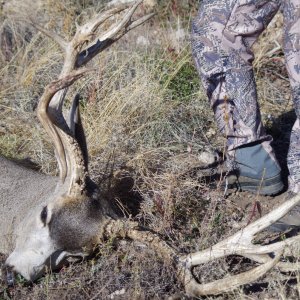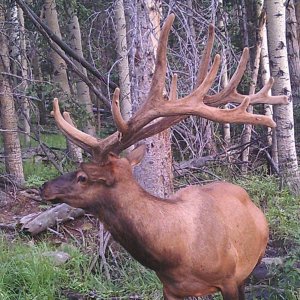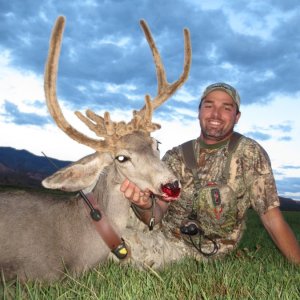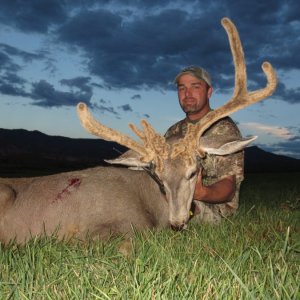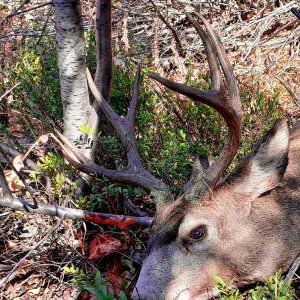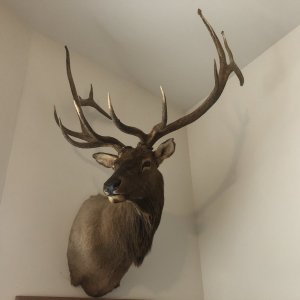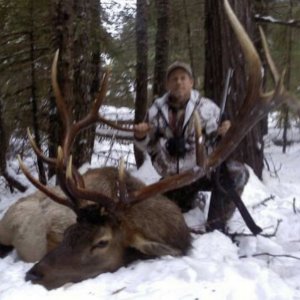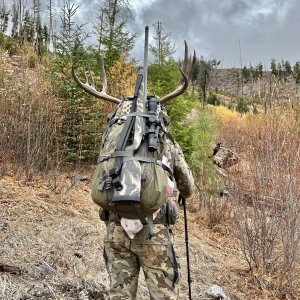LAST EDITED ON Nov-26-10 AT 00:13AM (MST)[p]I posted this on TAH awhile back:
____
We have a reproduction of the Beck Buck in our house. It officially scored 101 6/8 in 1953 (I think it was 1953 - don't have my records handy) and it was taken in 1878 in Antelope Valley, Arizona by an unknown hunter. The buck was discovered to have had 2 inches of artificial material added to it's bases when it was mounted by the taxidermist. As this was done before official records were even being kept it's believed that this wasn't done to increase it's "score", but rather to make the buck look more normal as it was probably taken in what would be today considered out of season and as such had prongs very low on it's head because it probably wasn't done growing.
When we received the reproduction we scored it without the added 2 inches and it scored 101. Since reproductions are always smaller than or equal in size to the original horns and since this buck shrank for 75 years before it was officially scored and probably for even longer before it was reproduced we believe that the 101 score is easily a very "dry" and accurate score. The reason the buck didn't lose 4 inches of score when the bottom 2 inches were removed has to do with where the mass measurements fall on the horns.
Of course when B&C discovered the bottom 2 inches were fake in the 70's they removed it from all the record books from that point forward and declared Edwin Wetzler's buck the New World Record at that time.
____
And here's the reply straight from the 8th edition of Records of North American Big Game, 1981, on page 24, in the article 'Stories Behind the New World's Records' by Wm. H. Nesbitt:
"In this case, a trophy belonging to Dr. H. M. Beck (taken by an unknown hunter prior to the turn of the century) has been in the possession of the Academy of Natural Sciences, Philadelphia, since early in the century. It has been recognized as the world record since the inception of the current records keeping system in 1950. Its score of 101 6/8 exceeded by a sizeable margin the scores of the next highest ranking pronghorns, leading many to believe that it represented a genetic strain of pronghorn that had been lost forever in the early days of the country. A more simple explanation was found through a detailed examination by a taxidermist, prior to its display loan to the National Taxidermists Hall of Fame in 1979."
"That examination of the horn material revealed the possibility of trophy alteration. Not wishing to destroy the possible value of this world record, the taxidermist contacted the Academy of Natural Sciences, whose official then contacted the records office. Acting as a representative of the Club's Records of North American Big Game Committee, I personally examined this trophy, along with a respresentatvie of the National Taxidermists Hall of Fame. We found that nearly two inches of horn material had been added to the bases of both horns to make them longer. This was a most skillful job, and one that involved use of such simple material as paper mache and lampblack, being done in the early part of the century before modern moulding materials were available. The alteration was invisible on surface, being noticed only on the inside of the horns, when removed from the mount."
"After reviewing the photos and x-rays of the horns, the Records Committee approved removal of this tropy from the records listings, since altered trophies are specifically excluded from entry. As a result of this action, Wetzler's second place trophy then became the world record."
"It is quite possible that if the additional material had not been added to the Beck pronghorn, it might have still been the world's record, or at least in the top few trophies."




